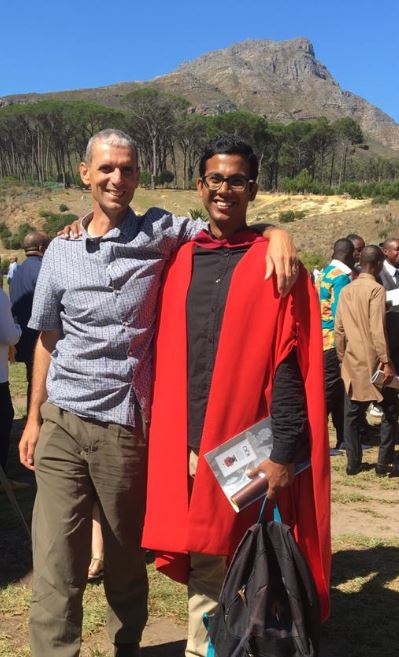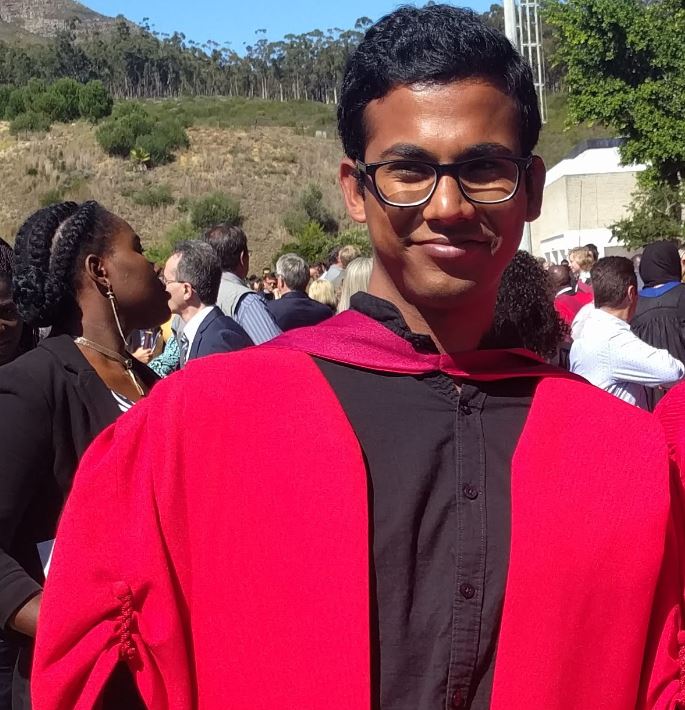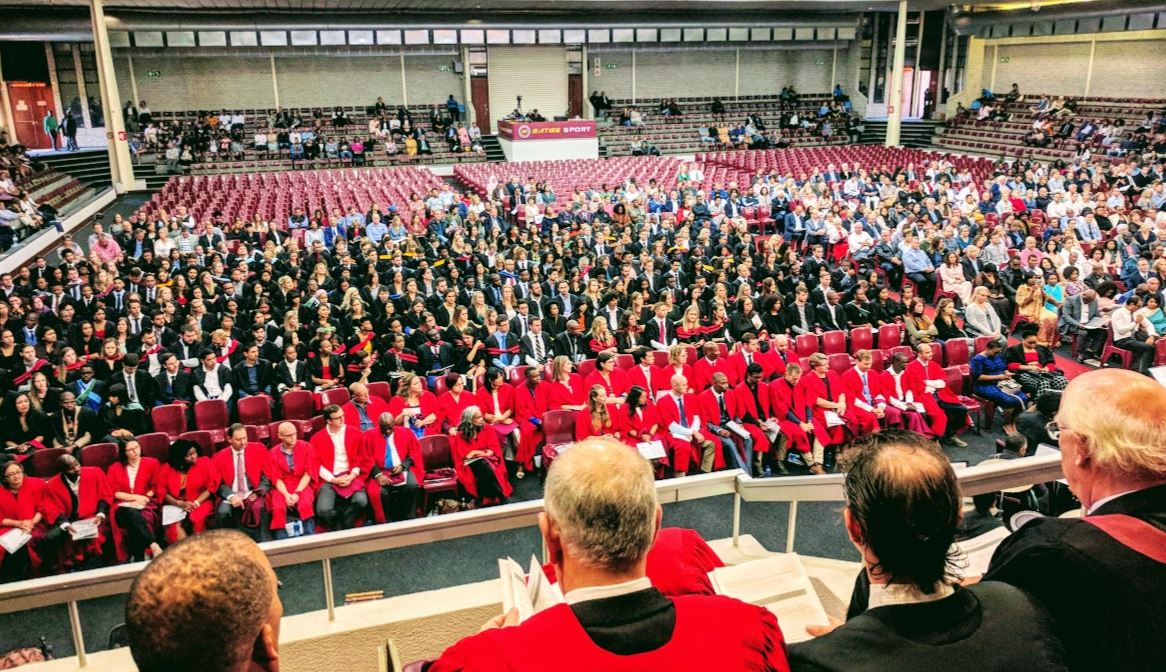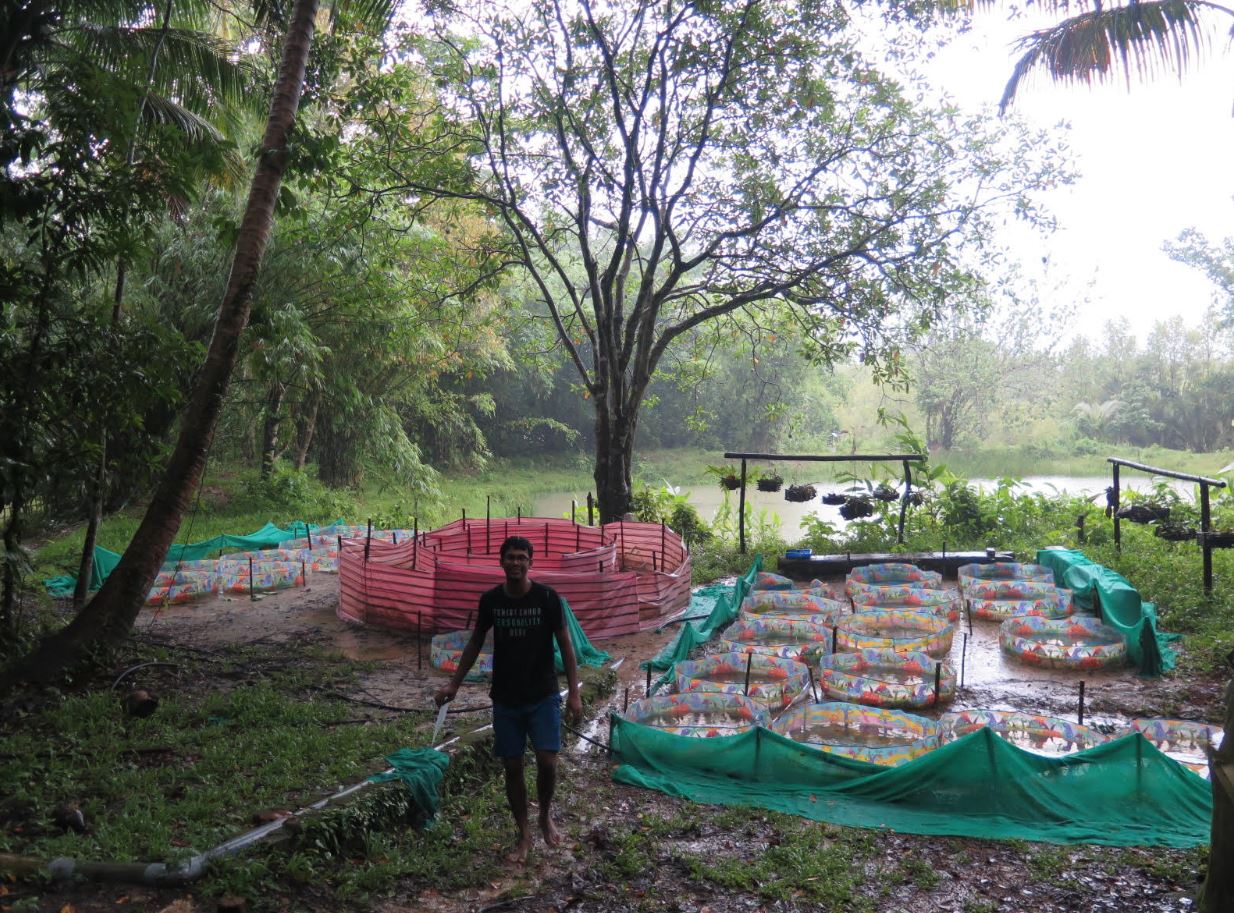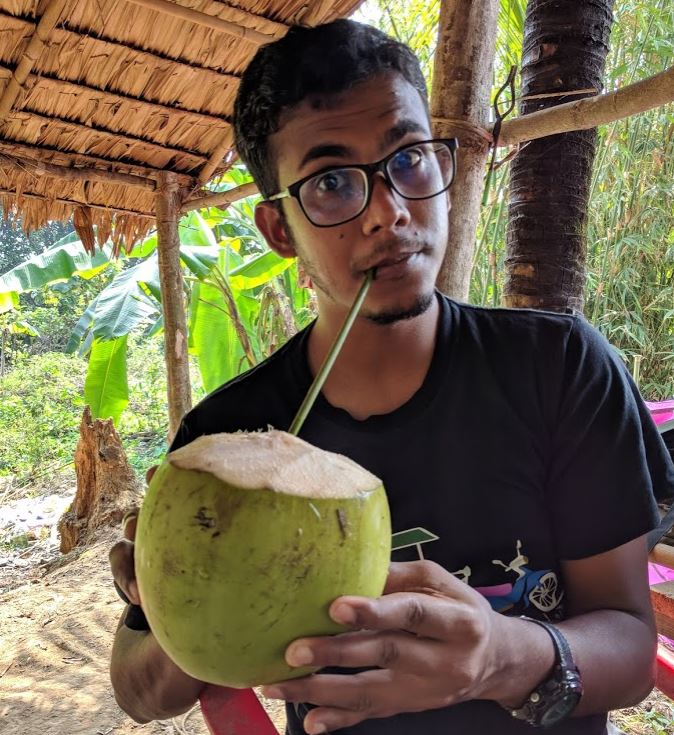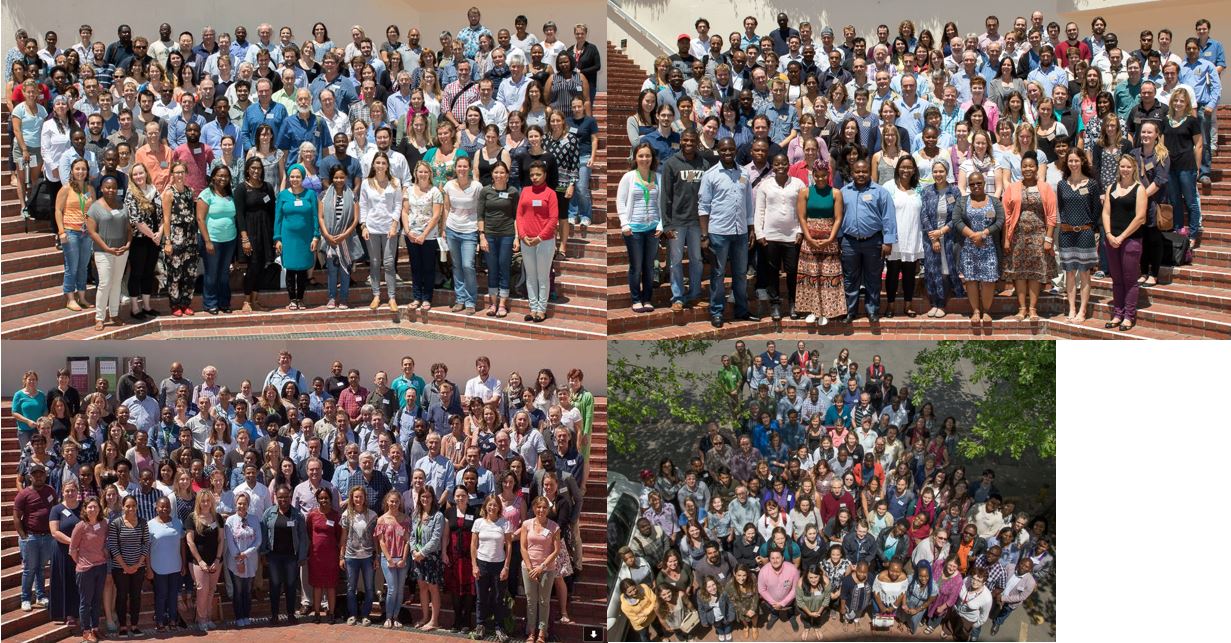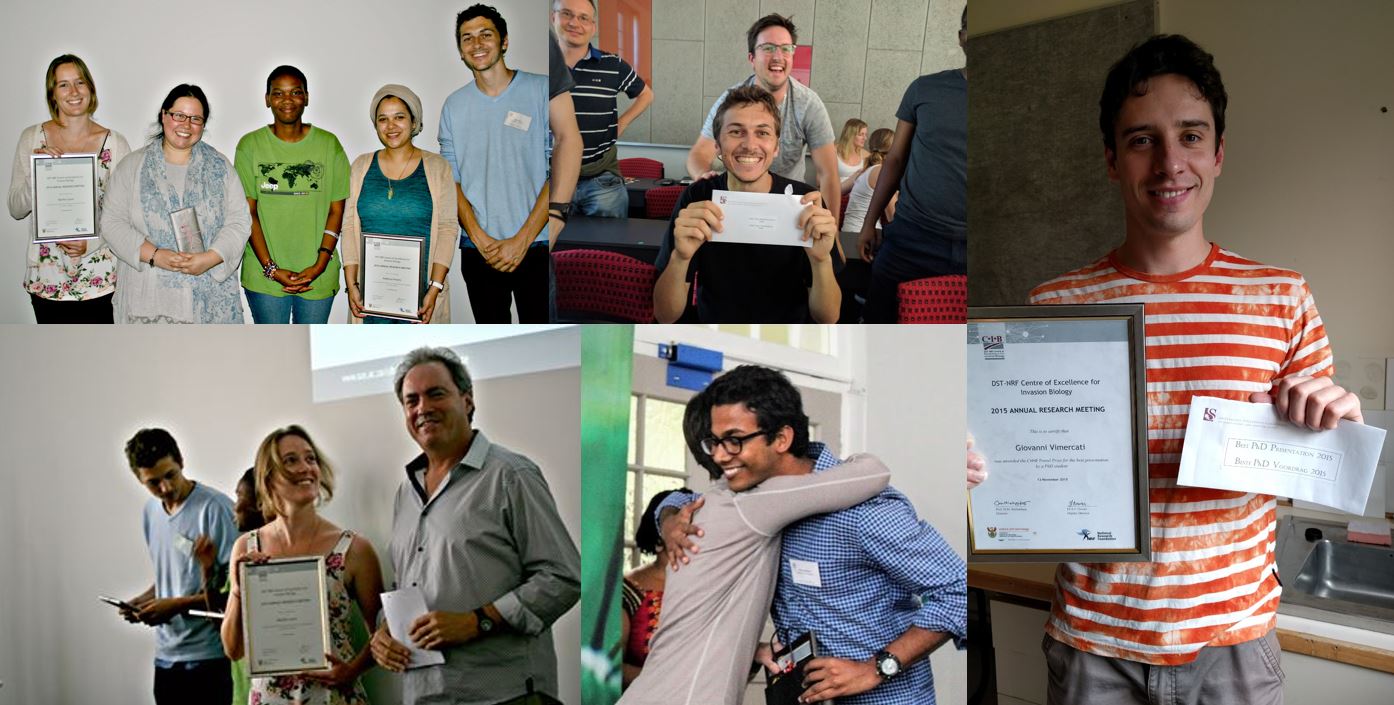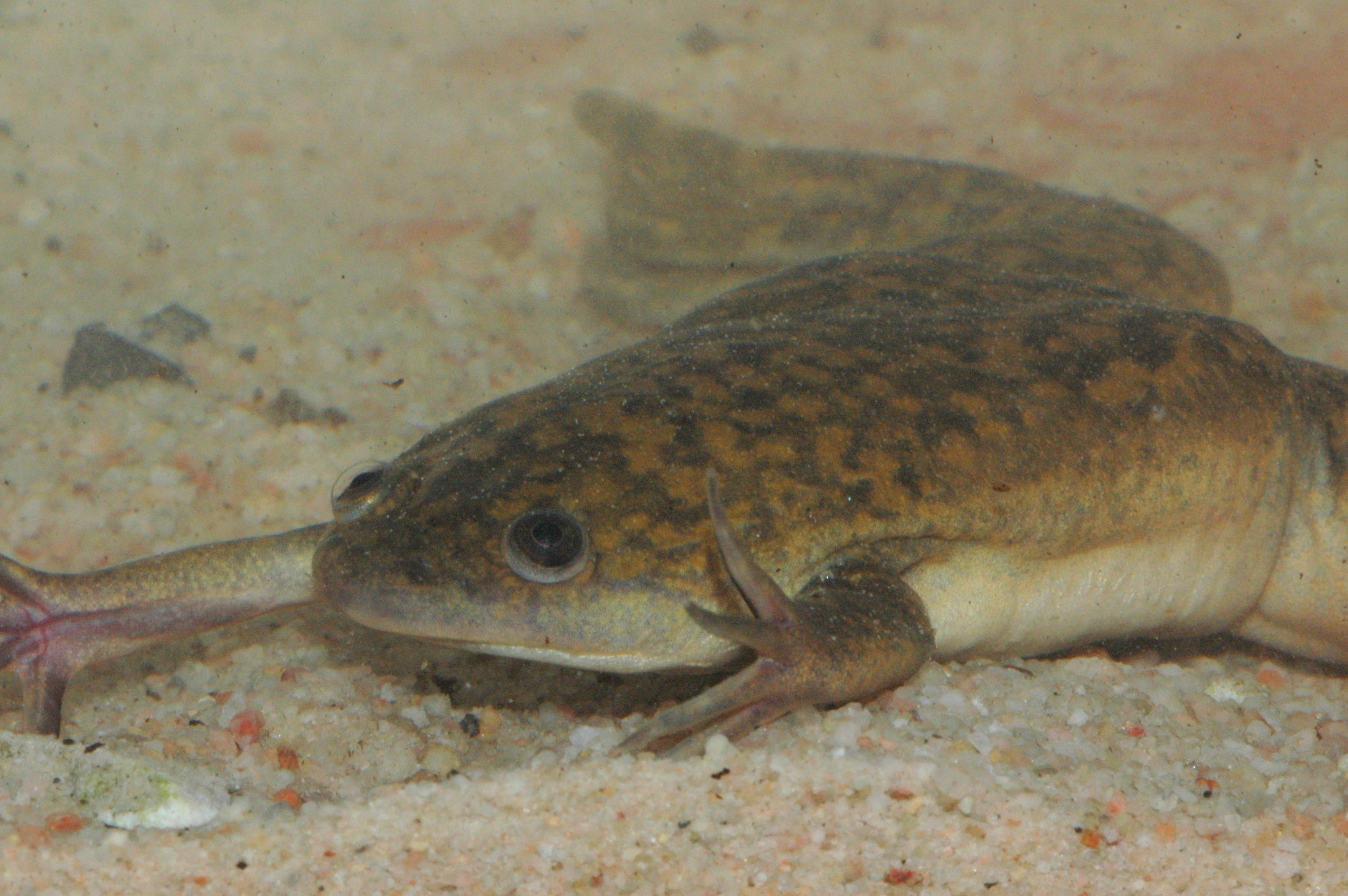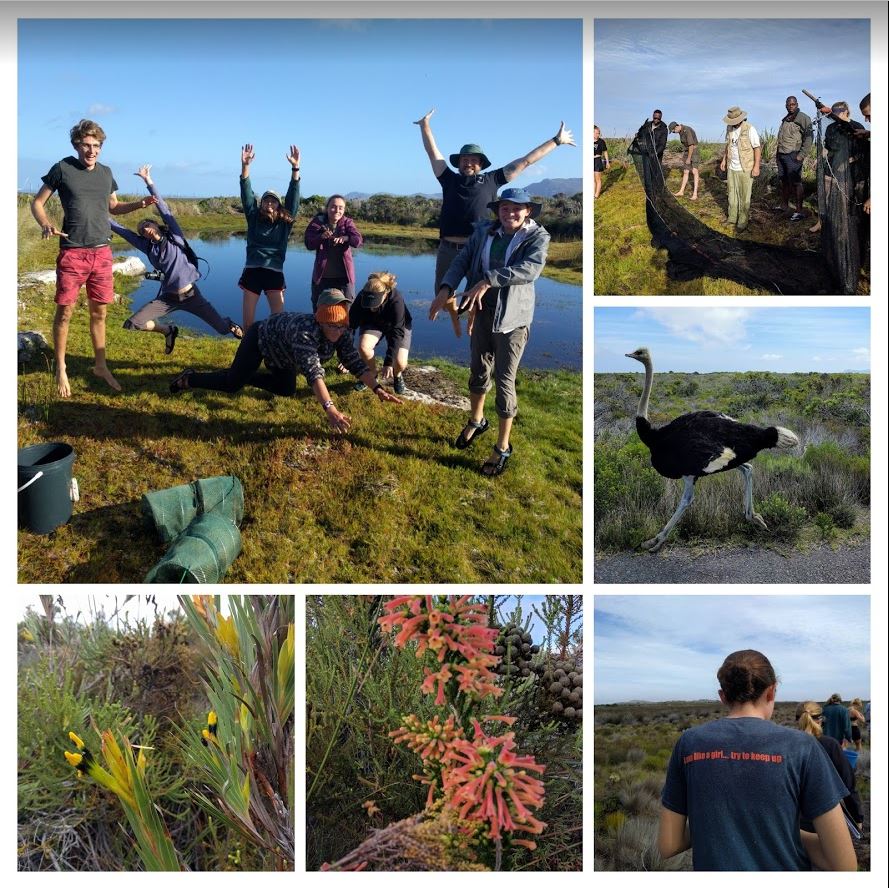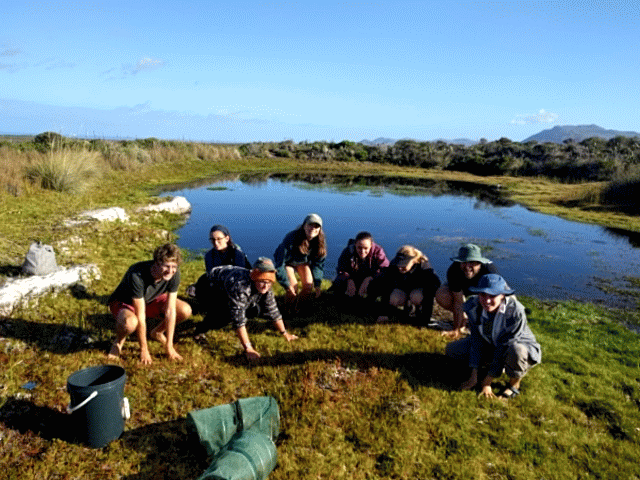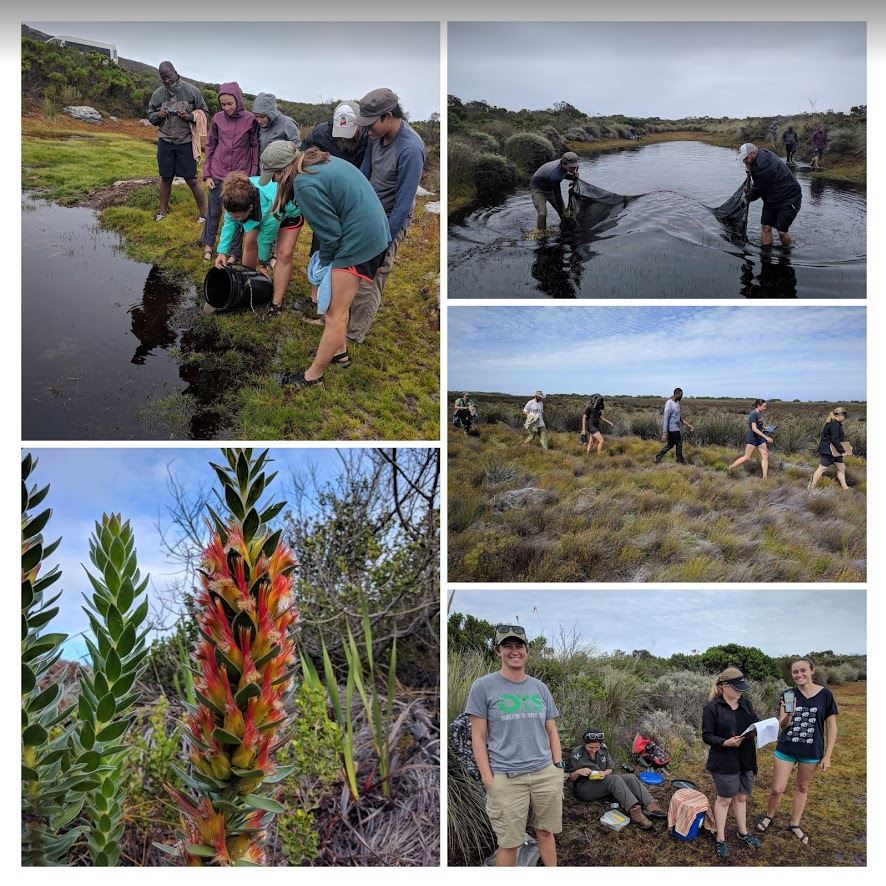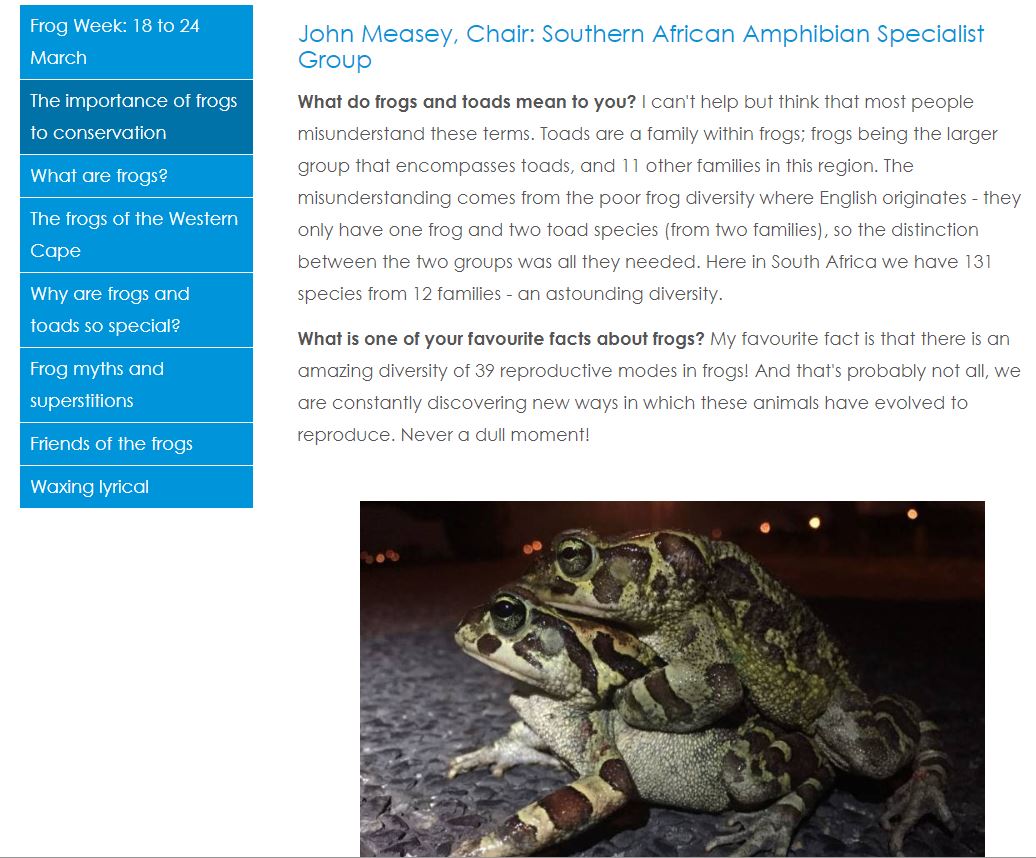Graduation day for Dr Nitya Prakesh Mohanty & Kirstin Stephens MSc
Graduation day is a a scarlet affair for PhD graduands at Stellenbosch University. Here is the recently hooded Dr Mohanty:
Here's what I had to read:
“Mister Vice-Chancellor”
Responding to novel invasions requires the collection of key variables. This work used the invasion of non-native Indian bullfrogs on the Andaman Islands to pioneer new methods in determining the time of colonisation, modes of dispersal and spread rates. Quantifying the impact allowed development of a model to predict potential international impact.
I request you to confer the degree on Nitya Prakesh Mohanty.
A hall full of graduands. The first two rows contain all the PhDs in scarlet. Behind them the MScs and at the back Honours and BScs. Can you see Nitya checking his phone in the front row?
Also graduating today was Kirstin Stephens MSc (cum laude) who is an honorary member of the MeaseyLab as I co-supervised her study with Jaco le Roux. Sadly, we didn't manage to get a pic with Kirstin after the big event, but here's one snapped by her mum.
Congratulations to you both!
Mohanty, N.P. 2019. The invasive Indian bullfrog Hoplobatrachus tigerinus on the Andaman Islands: Evaluating drivers of distribution, density, and trophic impact of an early stage invader. PhD Thesis. Stellenbosch University
Stephens, K. 2019. Impacts of invasive birds: assessing the incidence and extent of hybridization between invasive Mallard Ducks (Anas platyrhynchos) and native Yellow-billed Ducks (Anas undulata) in South Africa. MSc Thesis. Stellenbosch University
